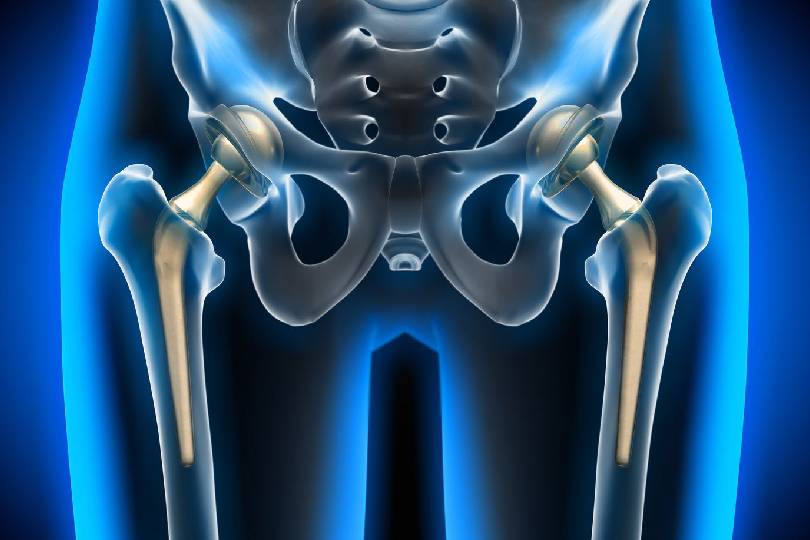Hip Replacement

Introduction:
Hip replacement surgery, also known as hip arthroplasty, is a medical procedure aimed at replacing a damaged or diseased hip joint with an artificial one. It’s a common surgical intervention that helps restore mobility, alleviate pain, and enhance the quality of life for individuals experiencing hip joint problems.
Understanding the Hip Joint:
Before delving into hip replacement surgery, it’s essential to comprehend the structure and function of the hip joint. The hip joint is a ball-and-socket joint connecting the thigh bone (femur) to the pelvis. The ball-shaped head of the femur fits into the socket (acetabulum) of the pelvis, allowing smooth and fluid movement.
Causes of Hip Joint Degeneration:
Various factors can contribute to hip joint degeneration, leading to the need for hip replacement surgery. Some common causes include:
- Osteoarthritis: This degenerative joint disease gradually wears away the cartilage cushioning the ends of the bones within the hip joint.
- Rheumatoid arthritis: An autoimmune condition that causes inflammation and eventual destruction of the hip joint.
- Post-traumatic arthritis: Arthritis that develops following a severe hip injury or fracture.
- Avascular necrosis: This condition occurs when the blood supply to the femoral head is disrupted, leading to bone death and eventual collapse.
- Hip dysplasia: A congenital condition where the hip joint doesn’t develop properly, resulting in abnormal joint mechanics and early degeneration.
Symptoms of Hip Joint Problems:
Individuals experiencing hip joint issues may encounter various symptoms, including:
- Persistent hip pain, especially during movement or weight-bearing activities.
- Stiffness and limited range of motion in the hip joint.
- Difficulty walking, climbing stairs, or performing daily activities.
- Swelling and tenderness around the hip joint.
- Grinding or popping sensations within the hip joint.
When conservative treatments such as medication, physical therapy, and lifestyle modifications fail to provide relief, a healthcare provider may recommend hip replacement surgery as a viable option.
Hip Replacement Procedure:
Hip replacement surgery involves several essential steps:
- Pre-operative Evaluation: Before surgery, the patient undergoes a comprehensive medical evaluation, including imaging tests like X-rays and MRIs, to assess the extent of hip joint damage and ensure candidacy for surgery.
- Anesthesia: During surgery, the patient receives either general anesthesia, which renders them unconscious, or regional anesthesia, which numbs the lower body while keeping the patient awake.
- Incision: The surgeon makes an incision along the side or front of the hip, providing access to the hip joint.
- Removal of Damaged Tissue: The damaged cartilage and bone within the hip joint are carefully removed to prepare for the implant.
- Implant Placement: The artificial hip joint components, typically made of metal, plastic, or ceramic materials, are inserted into the hip socket and femur.
- Closure: Once the implants are securely in place, the incision is closed with sutures or staples.
Recovery and Rehabilitation:
Following hip replacement surgery, a structured rehabilitation program is crucial for optimal recovery. Rehabilitation typically involves:
- Physical Therapy: Patients work with a physical therapist to regain strength, flexibility, and mobility in the hip joint through targeted exercises and stretches.
- Pain Management: Medications may be prescribed to manage post-operative pain and discomfort.
- Assistive Devices: Initially, patients may require assistive devices such as crutches or walkers to aid in walking and prevent falls.
- Gradual Return to Activities: Patients gradually resume daily activities and low-impact exercises under the guidance of their healthcare team.
- Follow-Up Care: Regular follow-up appointments with the surgeon allow for monitoring of the hip joint’s healing progress and addressing any concerns or complications that may arise.
Benefits and Risks:
Hip replacement surgery offers significant benefits for individuals suffering from debilitating hip joint conditions, including improved mobility, reduced pain, and enhanced quality of life. However, like any surgical procedure, it carries certain risks and potential complications, such as infection, blood clots, implant dislocation, and nerve damage.
Conclusion:
Hip replacement surgery is a highly effective treatment option for individuals experiencing severe hip joint pain and dysfunction. By understanding the underlying causes, symptoms, and surgical process associated with hip replacement, patients can make informed decisions regarding their healthcare and embark on the journey toward restored mobility and vitality. As with any medical procedure, it’s essential to consult with a qualified healthcare professional to determine the most appropriate treatment plan tailored to individual needs and circumstances.
